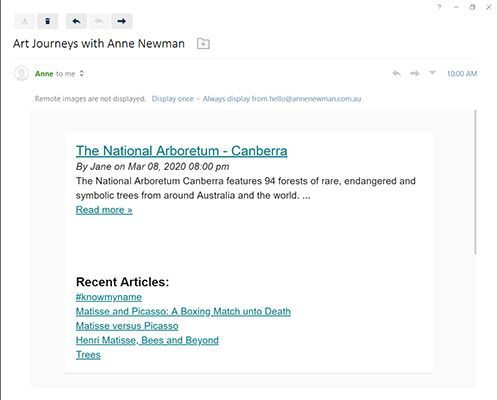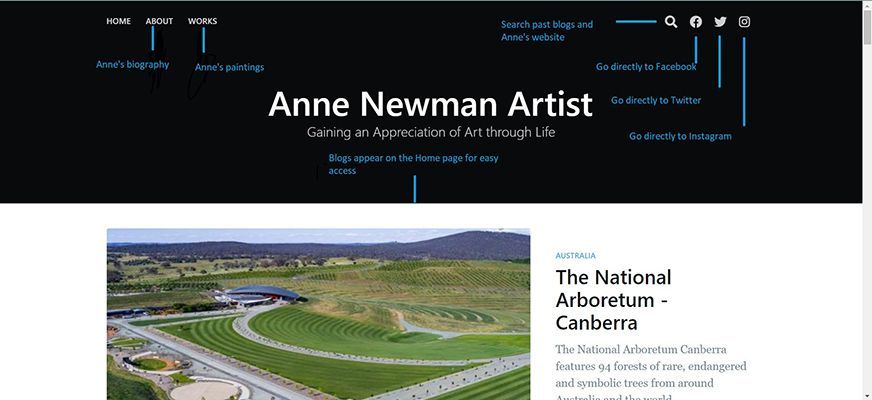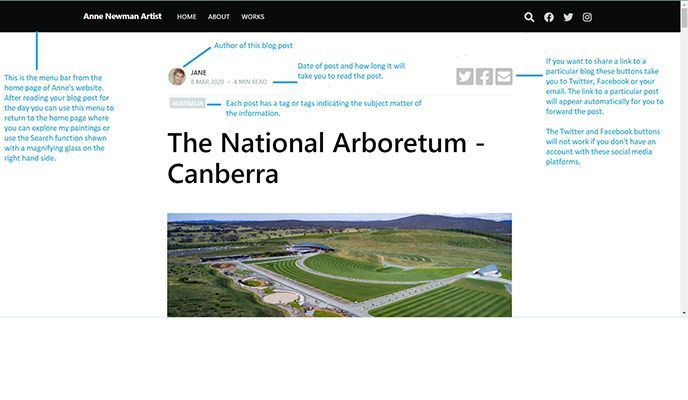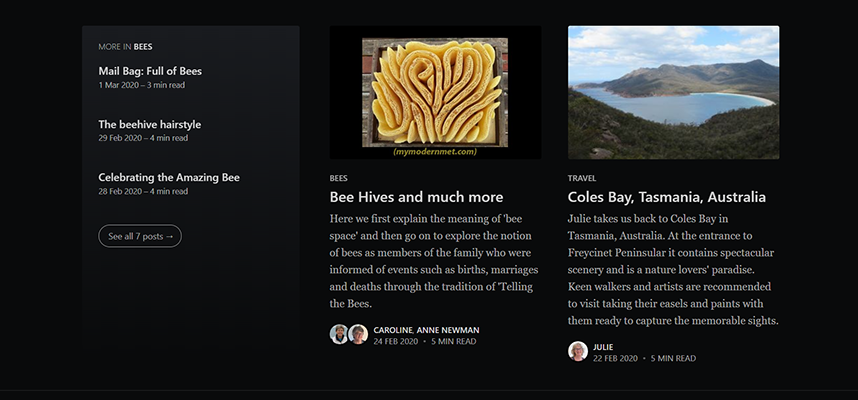Making the Best of the Blog Post
Here on our Art Blog we want you to get the best from our offerings. From time to time we will show you ways to enhance your interaction and learning. Today I want to take you on a little journey around my website and around a blog post to make sure you are aware of "all the offerings".
Most of you receive the daily art post directly into your email inbox and it would look something similar to this.

You already know to click on the highlighted title of the blog to be taken to the full text. Each post has an excerpt which summarises the content so that you can check to see if you are intersted or not in this particular post.
Note also that each email contains five posts from our past offerings. We do this so that if you miss a particular post you can use this link to catch up very easily.
Before we look more carefully at a post I want to take you to the Home page of my website and point out a few features. My website can be found at annenewman.com.au.
This is the top of the Home page where I have put some explanations in blue.

All the blog posts appear on the Home page and as we have written close to 1000 it would take you a long time to scroll through to look at what we have written. Nevertheless, one of our subscribers told us that he likes looking at the home page and through the posts as it reminds him of being in a newsagency browsing through the magazines. I love this analogy and even I sometimes open up my website at the home page and browse the posts that make up our blog.
But what else is on the Home page? The black menu above the posts has on the left hand side links to:
About - where you can learn a little more about me as an artist and also my life as an educator.
Works - here you will find a record of all the paintings I have produced.
And on the right hand side:
Search - where you can look to see if we have covered your favourite artist or art topic. This is an internal search within my website offerings and not across the internet.
Direct links to Twitter, Facebook and Instagram for users of these social media platforms.
Now let us have a look at a blog post and make sure you are fully aware of all that is offered.

When you open a blog post you will see the black menu on top from the Home page which I have just explained. You can access any of the functions directly from the post. For example, while you are reading a post you might want to search my website to see if we have a post on a particular topic. The magnifiying glass is there in the top right hand side waiting for your command.
But let's move into the post itself. You will see a photo of who wrote each post from our team of me (Anne), Jane, Caroline and Julie. You are also given an indication of how long it will take to read the post. And under that each post has a tag (some have several but you will only see the main one) which indicates the subject matter. You can use the search button to check out what we have written on any of our tags. If you want to try a search I suggest you try the tag garden as we have written more posts that encompass gardens than any other tag. This is not surprising as I am a very keen gardener and lover of all things green - except kale!!
On the right hand side of each post you will notice three small grey coloured icons which you will recognise as the Twitter, Facebook and Email icons. If you have a Twitter or Facebook account you can click on the appropriate icon and be taken to your account with the link to the current blog post already recorded for you to post to your Twitter followers or Facebook friends.
I know many of you don't use either of these platforms, therefore we have included an email function which allows you to send the blog post to a friend or relative. Try it out and see if you like this function.
Within the posts we have a new function which adds to the decorative appeal of our writings. If you see the text and image in the format as shown below it is a link directly through to the internet site. Click on it and away you go. This link is to the Sisi Museum in Vienna.

And now we are going to conclude by looking at the bottom of the post page. On the left hand side you are given a list of blog posts that have the same tag for you to follow up on if you have an interest in the topic. And on the right hand side you are given two past posts (with excerpt) just in case you missed reading them when they were originally posted.

I do hope this has helped you gain the most out of our art blog. We do welcome your comments which will help us continue to produce an interesting and educational blog which aims to foster an appreciation of art through life.

